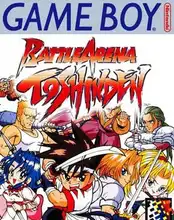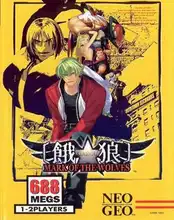Before polygons dominated the landscape and graphics cards cost more than a used car, video games lived and breathed in two dimensions. These weren't just technical limitations; they were the canvas for some of the most creative, challenging, and downright fun experiences gaming has ever offered. Decades later, the appeal of 2D retro games hasn't faded. In fact, for many, it's stronger than ever.
But why do these flat worlds and chunky pixels continue to hold such a powerful grip on our collective gaming soul? It's more than just a trip down memory lane.
The Enduring Magic: Why 2D Retro Games Still Rock
While nostalgia certainly plays a part, the lasting popularity of 2D retro games goes deeper. It speaks to fundamental aspects of game design that sometimes get lost in today's pursuit of hyper-realism and complexity.
Gameplay Over Graphics
In the era of 2D, developers couldn't rely on stunning visuals to carry a game. They had to focus on the core mechanics: tight controls, clever level design, challenging puzzles, and satisfying progression. This emphasis on fundamental gameplay principles created experiences that are still incredibly fun, regardless of how simple they look. It's proof that true fun comes from well-crafted design, not just graphical horsepower.
Simplicity and Accessibility
Compared to many modern blockbusters, 2D retro games often boast simpler interfaces and mechanics. This lower barrier to entry makes them incredibly accessible. You can often pick up a controller and understand the basics within minutes. This simplicity doesn't mean a lack of depth, but rather a focus on mastery of core actions rather than memorizing complex control schemes or navigating intricate menus. It's perfect for quick gaming sessions or introducing new players to the joy of gaming.
Less Focus on Competitive "PWNage"
While competitive 2D games exist (hello, fighting games!), the culture surrounding many classic 2D experiences was less focused on dominating and humiliating opponents. Many were single-player adventures, co-op experiences, or local multiplayer games where the fun came from shared challenge and presence, not online anonymity and aggressive competition.
Timeless Art Style: The Power of Pixel Art
Unlike early attempts at 3D that often age poorly, well-executed pixel art has a timeless quality. It's a stylized form that relies on suggestion and imagination, much like classic animation. The constraints of the medium forced artists to be incredibly creative with color palettes and limited resolutions, resulting in iconic, memorable characters and environments that remain visually appealing today.
Iconic 2D Retro Games You Need to Revisit (or Discover!)
Ready to dive into the flat-but-fantastic world of 2D classics? Here are just a few examples across different genres that showcase the enduring appeal:
Platformers
- Super Mario World (SNES): A masterclass in level design, introducing Yoshi and featuring incredibly secrets. Pure platforming bliss.
- Sonic the Hedgehog 2 (Genesis/Mega Drive): Blazing fast, stylish, and introduced Tails. A defining game of the 16-bit era's speed.
- Mega Man X (SNES): A more action-oriented take on the Blue Bomber with wall-jumping and armor upgrades. Fast-paced and challenging.
RPGs
- Chrono Trigger (SNES): Widely considered one of the greatest RPGs ever made, featuring an incredible story, time travel, multiple endings, and a unique combat system.
- Final Fantasy VI (SNES): An epic tale with a large cast of memorable characters, a sweeping soundtrack, and a steampunk-inspired world.
- EarthBound (SNES): A quirky, charming, and deeply unique modern-day RPG with a distinct art style and sense of humor.
Action/Adventure
- The Legend of Zelda: A Link to the Past (SNES): A sprawling adventure across two interconnected worlds, filled with dungeons, puzzles, and secrets.
- Super Metroid (SNES): Atmospheric, exploration-focused, and incredibly influential. Masterful level design and environmental storytelling.
- Castlevania: Symphony of the Night (PS1): While on a later console, its core gameplay is 2D exploration and combat, setting the standard for the "Metroidvania" genre with its vast, interconnected castle.
Fighting Games
- Street Fighter II (Arcade/SNES/Genesis): The game that ignited the fighting game boom. Iconic characters, special moves, and competitive depth.
- Mortal Kombat (Arcade/Various): Grittier, bloodier, and famous for its fatalities. A cultural phenomenon.
Puzzle & Arcade Classics
- Tetris (Various): The ultimate simple-yet-addictive puzzle game. Timeless and universally appealing.
- Pac-Man (Arcade/Various): Gobble pellets, avoid ghosts. An arcade icon whose simple premise remains fun today.
Where to Play These Classics Today
You don't need original hardware (though that's fun too!) to enjoy 2D retro games. Many are readily available:
- Digital Stores: Platforms like GOG.com (Good Old Games) and Steam offer curated collections and individual classic titles, often updated to run on modern PCs.
- Modern Consoles: Nintendo, Sony, and Microsoft frequently release retro collections, offer classic games via subscription services (like Nintendo Switch Online), or sell ports on their digital stores.
- Emulation: While legally complex depending on game ownership and region, emulators allow playing games from older systems on modern hardware. Projects like DOSBox are essential for many classic PC titles. (Always research the legal status in your area).
- Archive.org: The Internet Archive has a vast collection of classic games playable directly in your browser, offering a fantastic way to sample history.
The Timeless Appeal of Pixel Art
The visual language of 2D retro games, particularly pixel art, is a key part of their charm. It requires a different kind of appreciation than photorealism. It's about bold colors, clear shapes, and the magic of seeing how much expression and detail artists could pack into limited pixel counts. This stylized approach doesn't become outdated in the same way that early attempts at realistic 3D graphics often do. It's an aesthetic choice that remains vibrant and appealing.
Conclusion
Whether you're revisiting childhood favorites or discovering these gems for the first time, 2D retro games offer a direct line to the foundational fun of video games. They remind us that innovation isn't just about pushing technical boundaries, but about crafting engaging experiences. Their focus on pure gameplay, accessible design, and timeless pixel art ensures they remain not just relics of the past, but vibrant, playable classics that continue to capture our hearts today.
So, why not fire one up? A world of adventure awaits, one pixel at a time.
FAQ
Q: Are all retro games 2D? A: No, "retro" refers to older games in general. While many iconic early games were 2D due to technical limitations, the retro era also includes early 3D games from the PlayStation, N64, and PC. However, 2D games were dominant for a significant period and remain a core part of the retro gaming identity.
Q: Where can I legally buy and play 2D retro games? A: Many classic 2D games are available on digital platforms like GOG.com, Steam, and console-specific online stores (Nintendo eShop, PlayStation Store, Xbox Marketplace) often in curated collections or enhanced ports. Subscription services like Nintendo Switch Online also offer access to libraries of classic titles.
Q: Why do 2D retro games feel different from modern games? A: Often, they prioritize fundamental gameplay mechanics and level design over complex graphics or systems. They tend to have simpler controls, a clearer focus on core loops (like platforming, puzzle-solving, or combat), and rely less on tutorials or complicated interfaces, offering a more direct, pick-up-and-play experience.
Q: Are there new games made in the style of 2D retro games? A: Absolutely! There's a huge and thriving indie scene creating new games with pixel art visuals and gameplay inspired by classic 2D genres (platformers, RPGs, Metroidvanias, etc.). These games often blend retro aesthetics with modern design sensibilities.



